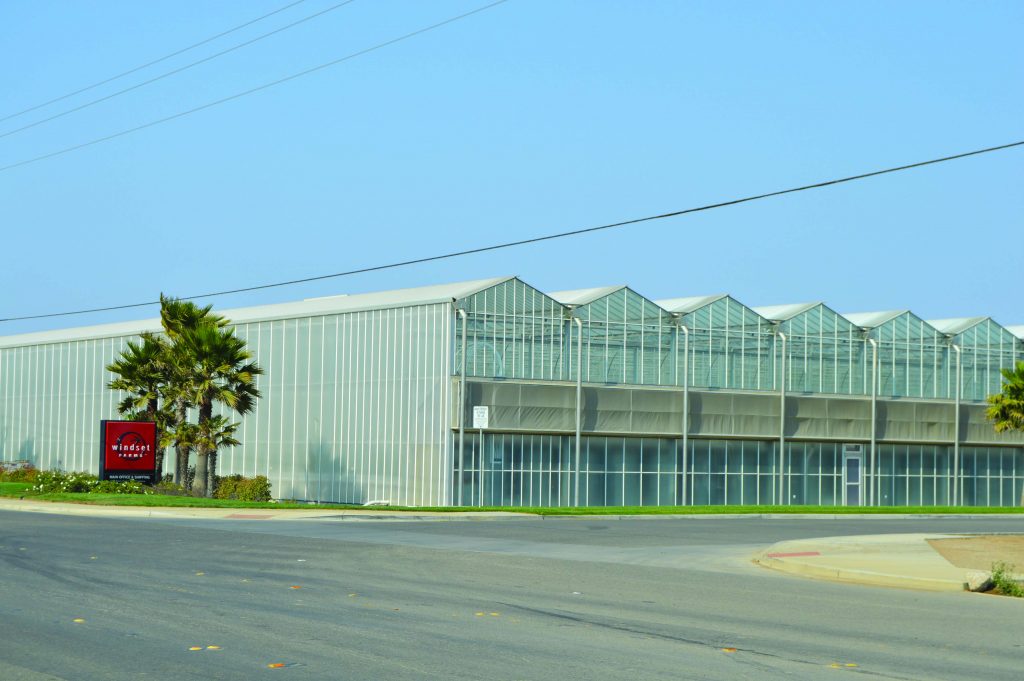Windset Farms growing its Santa Maria operations

Windset Farms plans to add two greenhouses to its Black Road property in Santa Maria.
The Santa Maria City Council will consider a development agreement with Windset Farms to add two greenhouses on 40 acres of its 220-acre Black Road property.
The expansion includes the construction of an 88,000-square foot grading, packing and cooling facility.
If approved Sept. 9, the development agreement will also include a deferral of road construction and improvements by the company and a three-year extension on maintenance of Betteravia Road and Black Road at the project site. The fourth phase of a development agreement approved in 2009 maintains a requirement that the site employ at least 400 people, salaries for workers are more than $1 above the minimum wage and health care benefits are provided.
Windset is investing almost $40 million dollars in the project, including $2 million to remediate large oil sumps on the property. The development agreement also lists $700,000 to be paid by the company in compensation for the deferred road work and a “potential loss of some high-paying jobs in the light industrial and commercial manufacturing areas of employment.”
The new facilities will bring the Santa Maria branch of the Canadian company up to 50 full-time managers and more than 700 contracted farm workers, David Wesley, vice president of construction and development for Windset, said in an email.
The mayor, city council and staff have “proven their commitment to being ‘open for business’ and willing to work with local companies to help secure the economic future of both the city and local businesses,” Wesley said. “Windset is very proud to call Santa Maria its home.”
Heat pushes up grape harvest
Winemakers in Paso Robles are enjoying the “new normal” of early harvests.
Since 2011, hot weather has moved the harvest up in the calendar, with growers beginning to pick wine grapes as early as mid-August.
The trend comes with a few benefits, not least that it moves his vacation forward, joked Jeremy Weintraub, winemaker for Adelaida Cellars. Earlier harvests mean less risk of conflict with rains and more latitude to allow the grapes’ skins to develop for a better quality wine.
“To a large degree, picking decisions are a subjective thing, to the extent we listen to nature and then act with our guts,” Weintraub said. “How we would like the wine to end up, that’s where the picking decision is.”
With a late harvest, grapes can develop pyrazines, which give them a “green” or “bell pepper” flavor, said Kevin Sass, winemaker at Halter Ranch. While excessive sugars or other effects of early harvests can be mitigated on the vine or at the winery, “there’s nothing you can do to get the pyrazines out.”
Still, early harvests are correlated with excessively hot years and low rainfall, which are a “recipe for disaster for dry farming,” he said, a practice both wineries use on some acreage.
Yield declines for Halter this year, while not as large as the record low harvest last year, are a product of low rainfall that would help bring nutrients from the surrounding soil to the root systems.
“Obviously costs in California for labor, cost of living is all increasing and everybody’s yields in California seem to be going the opposite direction,” Sass said. “We haven’t really raised our prices but that’s not to say it won’t happen.”
Muscat, Viognier, Zinfandel, Syrah and Grenache Blanc were a few of the varietals that saw the earliest picks in the area. Winemakers for Alta Colina and kukkula also reported yields of 1.5-3 tons per acre with small berries, a good sign for the wines.
So far, Weintraub said, there haven’t been many spikes in heat to damage the fruit and he’s pleased with the quality of the grapes.
“We have a good crop load,” he said. “We have a lot of barrels left over from last year because we had such a short crop.”
The timing won’t affect plans for next year, the growers said, though the hot conditions have Sass looking for plants with a better root stock, to get more out of each acre.
“The demand is higher than the supply at this point, so for us it makes sense to continue to plant,” he said. “It’s not holding us back but there’s definitely a new outlook on planting instead of putting the same old thing in the ground the way we always used to.”
• Contact Marissa Nall at mnall@pacbiztimes.com.











